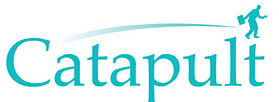Article 6 of 7-part thought leadership series: Protecting and Sustaining Your Organisation Through Ethical Decision-Making
The sixth article in our 7-part series showcases real-world applications of the 9 Pathways to ‘Good Culture’, underscoring how these concepts are not just theoretical but can drive tangible organisational change. Let’s examine how different organisations have implemented these pathways, aligning with Hartman’s Value Science to foster ethical decision-making and sustainability.
1. Trust Reinforced: A Financial Institution’s Redemption. A financial institution, once marred by trust-eroding scandals, revitalized its culture by reinforcing the pathway of Trust. By implementing transparent reporting mechanisms and encouraging open communication, it restored faith among stakeholders. This move resonates with Hartman’s Intrinsic Value, focusing on the inherent worth of transparent relationships and the rebuilding of moral credibility.
2. Team Synergy: A Tech Giant’s Collaborative Leap. Consider a global tech company that, by embracing Team Synergy, broke down silos to encourage cross-functional collaboration. This led to innovative product solutions and a more cohesive company culture. The synergy among teams embodies Hartman’s Extrinsic Value, emphasising the tangible results of collaborative efforts.
3. Vision & Mission Revitalized: A Retailer’s Ethical Pivot. A retail chain, facing backlash for unethical practices, reoriented its Vision & Mission to prioritize sustainable and ethical sourcing. This pivot not only improved its brand image but also bolstered customer loyalty. The systemic value was at play here, providing a framework for consistent ethical behaviour aligned with the company’s core purpose.
4. Responsibility & Integrity: The Healthcare Revolution. A healthcare provider, post-crisis, focused on Responsibility & Integrity to rebuild its reputation. By instituting rigorous patient care standards and emphasising ethical conduct, it saw improved patient outcomes and staff morale. This approach exemplifies Hartman’s Intrinsic Value, underscoring the importance of upholding dignity and ethical responsibility in every action.
5. Getting Results: The Ethical Manufacturing Success. A manufacturing firm, previously criticized for labour issues, shifted its focus to ethically Getting Results. It invested in employee safety and fair labour practices, leading to a more motivated workforce and better industry reputation. Here, the balance of Extrinsic and Intrinsic Values ensured that success was not achieved at the expense of ethical standards.
6. Success Strategies & Discipline: A Non-Profit’s Effective Outreach. A non-profit organisation redefined its Success Strategies & Discipline to better serve its mission. Through ethical fundraising and disciplined execution of its programs, it expanded its reach and impact. This strategic approach is grounded in Systemic and Extrinsic Values, ensuring achievements are ethically and structurally sound.
7. Innovation & Change: An Automotive Industry’s Ethical Drive. An automotive company confronted with environmental challenges integrated Innovation & Change to transition towards sustainable practices. Investing in green technologies led to a renewed market position, showcasing a commitment to ethical progress reflective of both Extrinsic and Systemic Values.
8. Preparation & Tactics: Retail Industry’s Proactive Ethics. A leading retailer, in anticipation of industry changes, employed Preparation & Tactics. It developed ethical supply chain strategies and invested in workforce training, maintaining competitiveness while adhering to ethical standards, illustrating a strategic combination of Systemic and Extrinsic Values.
9. Consistency & Conformity: A Corporation’s Governance Reboot. After a governance scandal, a multinational corporation emphasised Consistency & Conformity in its operations. Establishing uniform ethical guidelines and conducting regular audits led to a restored sense of stability and integrity, a direct application of Systemic Value.
Conclusion
These real-world examples demonstrate the effectiveness of applying the 9 Pathways to foster ethical decision-making and prevent scandals. By aligning organisational practices with Hartman’s Value Science, companies not only steer clear of ethical pitfalls but also chart a course towards a resilient and principled future.
Join us for the final article in this series, where we will synthesize these insights and offer a roadmap for sustaining your organisation’s ethical journey.
Stay with us as we continue to chart the course for ethical vigilance and proactive integrity in organisational life.
🚀 Embark on a journey towards ethical excellence and business success. Your organization’s future depends on it.
👉 Begin your journey to ethical excellence: Take the quiz now at [https://goodculture.scoreapp.com]
#EthicalLeadership #BusinessIntegrity #OrganisationalHealth #GoodCulture #ethics



0 Comments